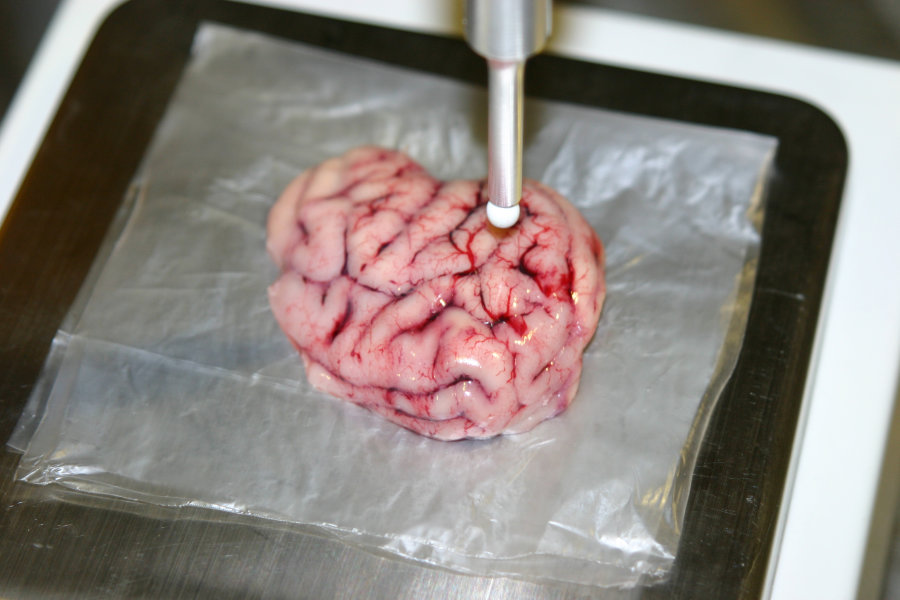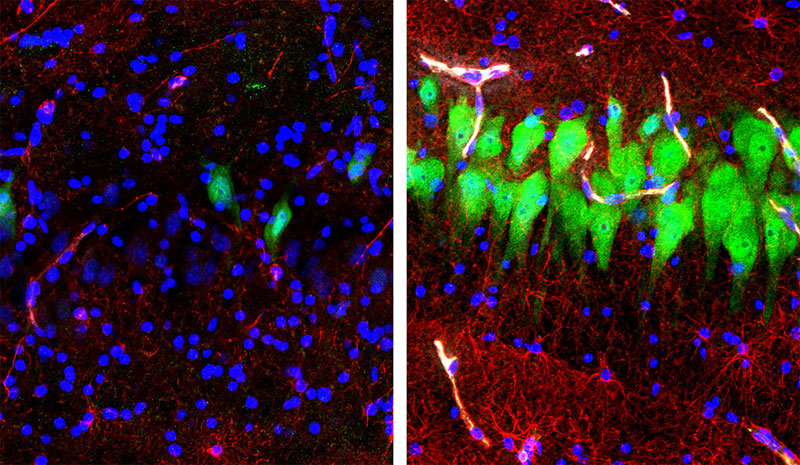
17th April 2019 Pig brains partially revived after death Circulation and cellular activity were restored in a pig's brain four hours after its death – a finding that challenges long-held assumptions about the timing and irreversible nature of brain functions after death – Yale scientists report today in the journal Nature.
The brain of a post-mortem pig, obtained from a meatpacking plant, was isolated and circulated with a specially-designed chemical solution. Many basic cellular functions, once thought to cease seconds or minutes after oxygen and blood flow cease, were observed, the scientists report in their study. "The intact brain of a large mammal retains a previously underappreciated capacity for restoration of circulation and certain molecular and cellular activities multiple hours after circulatory arrest," said Nenad Sestan, Professor of Neuroscience, Comparative Medicine, Genetics and Psychiatry. However, the researchers also stress that the treated brain lacked any recognisable global electrical signals associated with normal brain function. "At no point did we observe the kind of organised electrical activity associated with perception, awareness, or consciousness," said Zvonimir Vrselja, associate research scientist in neuroscience. "Clinically defined, this is not a living brain, but it is a cellularly active brain." Cellular death within the brain is usually considered to be a swift and irreversible process. Cut off from oxygen and a blood supply, the brain's electrical activity and signs of awareness disappear within seconds, while energy stores are depleted within minutes. Current understanding maintains that a cascade of injury and death molecules are then activated leading to widespread, irreversible degeneration. However, scientists in Dr. Sestan's lab, whose research focuses on brain development and evolution, observed that the small tissue samples they worked with routinely showed signs of cellular viability – even when the tissue was harvested multiple hours post-mortem. Intrigued, they obtained the brains of pigs processed for food production to study how widespread this post-mortem viability might be in the intact brain. Four hours after the pig's death, they connected the vasculature of the brain to circulate a uniquely-formulated solution they developed to preserve brain tissue, utilising a system called BrainEx. They found neural cell integrity was preserved, and certain neuronal, glial, and vascular cell functionality was restored.
This new system could help solve a vexing problem – the inability to apply certain techniques to study the structure and function of the intact large mammalian brain – which hinders investigations into the roots of brain disorders, as well as neuronal connectivity in both healthy and abnormal conditions. "Previously, we have only been able to study cells in the large mammalian brain under static or largely two-dimensional conditions utilising small tissue samples outside of their native environment," said co-first author Stefano Daniele, an M.D./Ph.D. candidate. "For the first time, we are able to investigate the large brain in three dimensions, which increases our ability to study complex cellular interactions and connectivity." While the advance has no immediate clinical application, the new research platform may one day be able to help doctors find ways to help salvage brain function in stroke patients, or test the efficacy of novel therapies targeting cellular recovery after injury, the authors say. "This line of research holds hope for advancing understanding and treatment of brain disorders and could lead to a whole new way of studying the post-mortem human brain," said Andrea Beckel-Mitchener, Chief of Functional Neurogenomics at the NIH's National Institute of Mental Health, which co-funded the research. It is unclear whether this method could be applied to human brains. The chemical solution lacks a number of components natively found in human blood, such as the immune system and other blood cells, which makes the experimental system different from normal living conditions. However, Sestan's team stress that any future study involving human tissue, or possible revival of global electrical activity in post-mortem animal tissue, should be done under strict ethical oversight. "Restoration of consciousness was never a goal of this research," said co-author Stephen Latham, senior researcher. "The researchers were prepared to intervene with the use of anaesthetics and temperature-reduction to stop organised global electrical activity if it were to emerge. Everyone agreed in advance that experiments involving revived global activity couldn't go forward without clear ethical standards and institutional oversight mechanisms." "It's our duty to work with researchers, to thoughtfully and proactively navigate any potential ethical issues they may encounter as they open new frontiers in brain science," said Christine Grady, Chief of the Department of Bioethics at the NIH Clinical Center.
Comments »
If you enjoyed this article, please consider sharing it:
|








